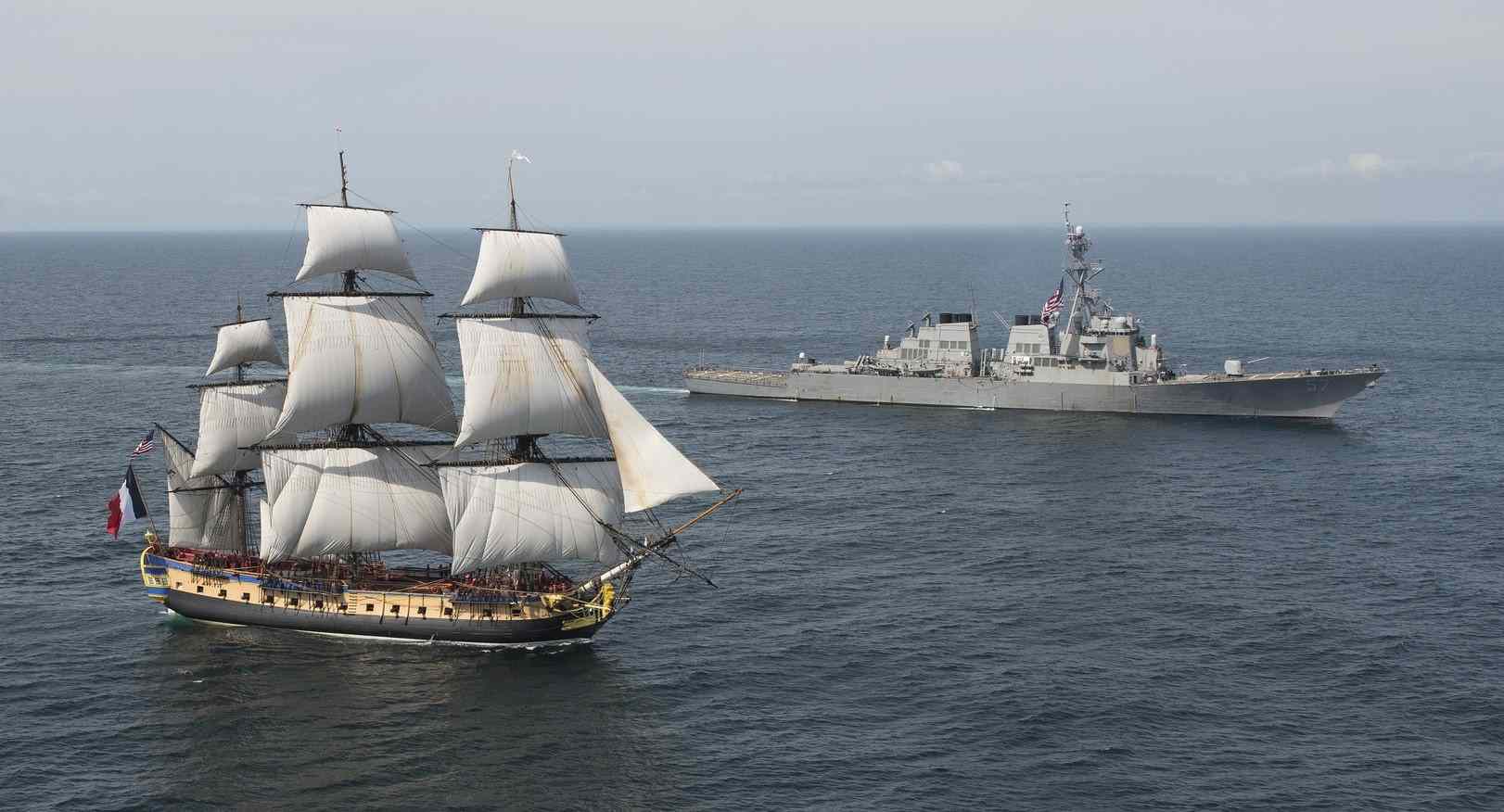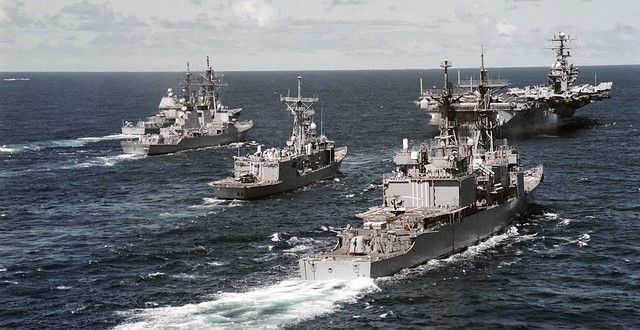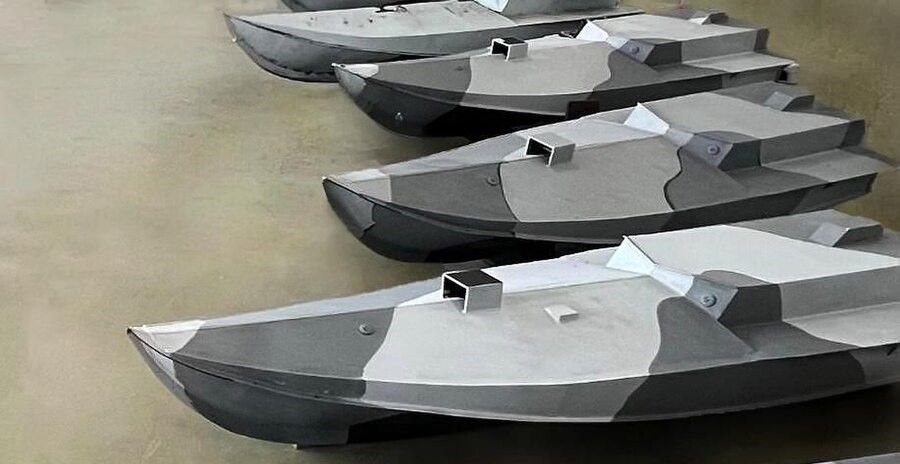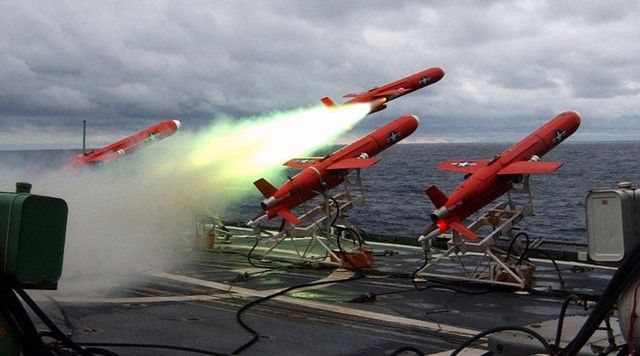How Drone Technology is Transforming Warship Design
Discover how drones are forcing a re-think on the shape and functionality of naval combat.

In the skies, on the seas, and in the depths below, evidence from the fighting in Russia and Ukraine is showing how the future of warfare is centred on drones.
Witnessing this technological shift is forcing nations in a race to develop ever more advanced warships compatible with a new generation of uncrewed vehicles. From airborne drones that can scout the horizon and coordinate attacks, to autonomous surface vessels that can overwhelm enemy defences, to underwater submersibles that can silently gather intelligence or sink enemy shipping, these robotic systems are poised to revolutionize maritime combat.

Key to this new approach to naval combat will be the ability to field drones or even drone swarms at sea, as well as to quickly launch and recover surface and underwater drones from crewed ships. A fact that has not gone unnoticed by modern navy planners.
As Luciano Castro, president of the Italian national congress on marine robotics stated at the recent Sea Drone Tech Summit 2024, “The navies of several countries around the world are working on ‘drone carrier’ projects, such as in Spain, Turkey, the United States and even China.” Adding that, “… the use of these new naval units equipped with various types of aerial drones, but also naval and underwater, will make it possible to carry out a series of wide-ranging intelligence and surveillance missions and also to jam and saturate adversary defenses through swarms of drones.”

This development is no easy task, as alongside the necessary launch and recovery systems next generation warships will require enhanced command, control, and communication system for the operational administration of swarms of uncrewed vehicles.
Taking on this challenge, the Italian Navy is setting warship designers and shipyards the task of building vessels with the capability of launching and recovering undersea drones through apertures in the hull, as opposed to cranes.
Related articles: The War in Ukraine: A New Era for Drone Manufacturing or Call for Drone Sector to Build America’s First Drone Fleet
“We want to challenge Fincantieri [shipyard] to rethink designs in a way that we can use launch and recovery systems for aerial, surface and undersea drones. [This] means looking at how best to handle storage, maintenance and loading ammunition,” explains Capt. Gianluca Marcilli who is in charge of the Technology Innovation Office at the Navy General Staff’s General Space and Innovation Office (UGSI). “We expect new navy vessels in ten years will be using a large number of drones, and we want to be prepared.”
Specifically, according to the military journal Defense News, “The study envisages four to six Unmanned Surface Vehicle (USV) drones on board, and has used Fincantieri’s SAND USV as a reference. Launched at Euronaval in 2022, the SAND (Surface Advanced Naval Drone) offers autonomy of up to 72 hours at eight knots.”

Naval commanders are also facing the challenge of connecting new drone technology into a modern warship’s complex combat management system, as well as how to integrate drones into vessels that are already under construction.
Italy, for example, has already begun building the Trieste Landing Helicopter Dock, which will also host the F-35B combat jet, however little preparation was made at the design phase to include drones onboard. Yet fighting in the war between Ukraine and Russia has since shown the importance of drone operations both on land and at sea.

As warship designers grapple with the integration of advanced airborne, underwater, and surface drone capabilities, they face a complex web of challenges that require innovative solutions.
Launching and recovering these autonomous drone systems from the confines of a naval vessel demands careful consideration of factors like limited deck space, adverse weather conditions, and the need to maintain combat readiness.
Designers must therefore strike a delicate balance between maximizing drone utility and minimizing disruption to core warship functions, all while adhering to stringent size, weight, and power constraints.
With the pace of change accelerating, these experts are even tasked with futureproofing their designs, to ensure warships can readily adapt to rapidly evolving drone technologies. The decisions made today will shape the future of naval warfare, as not since the creation of the aircraft carrier has warship design needed so much radical change.

